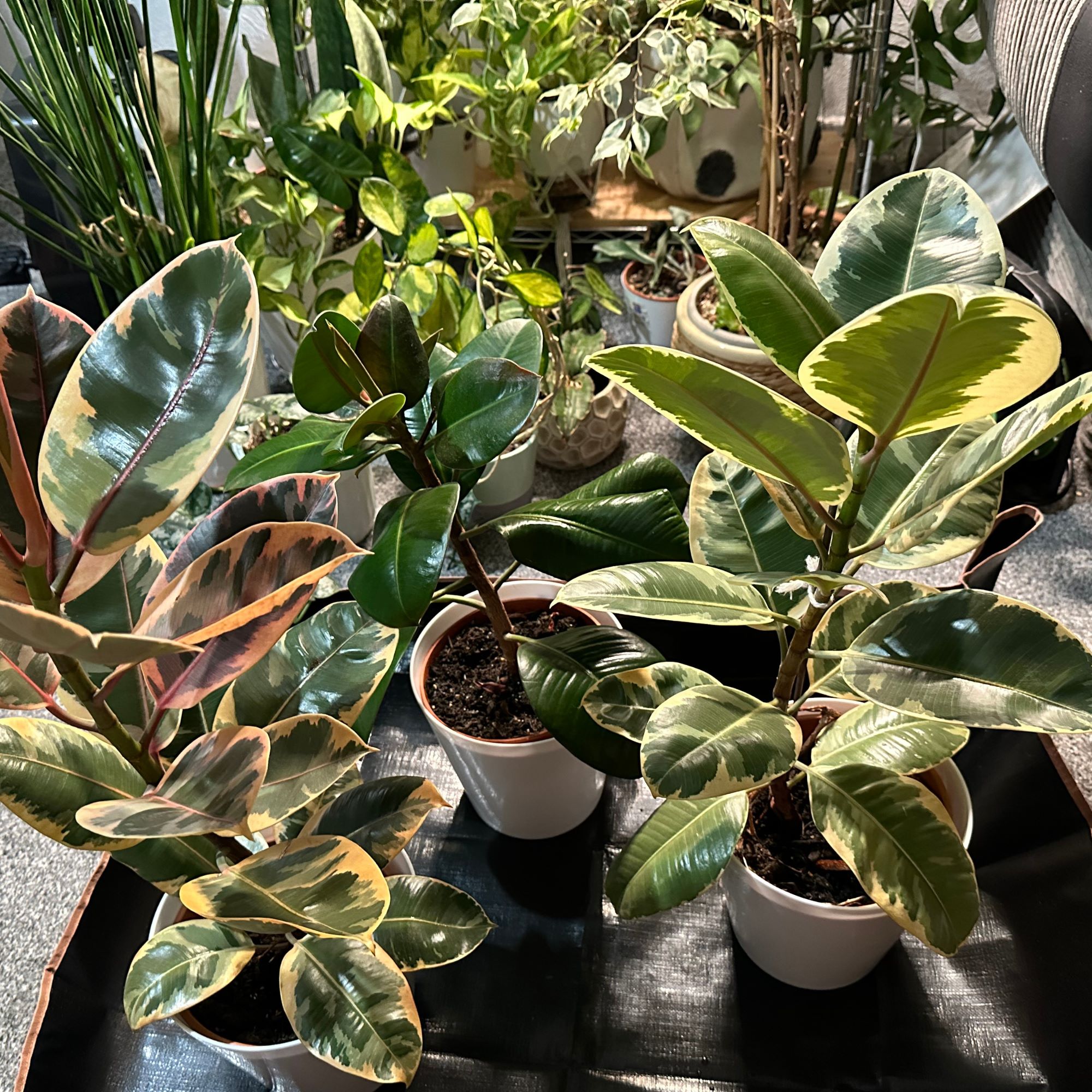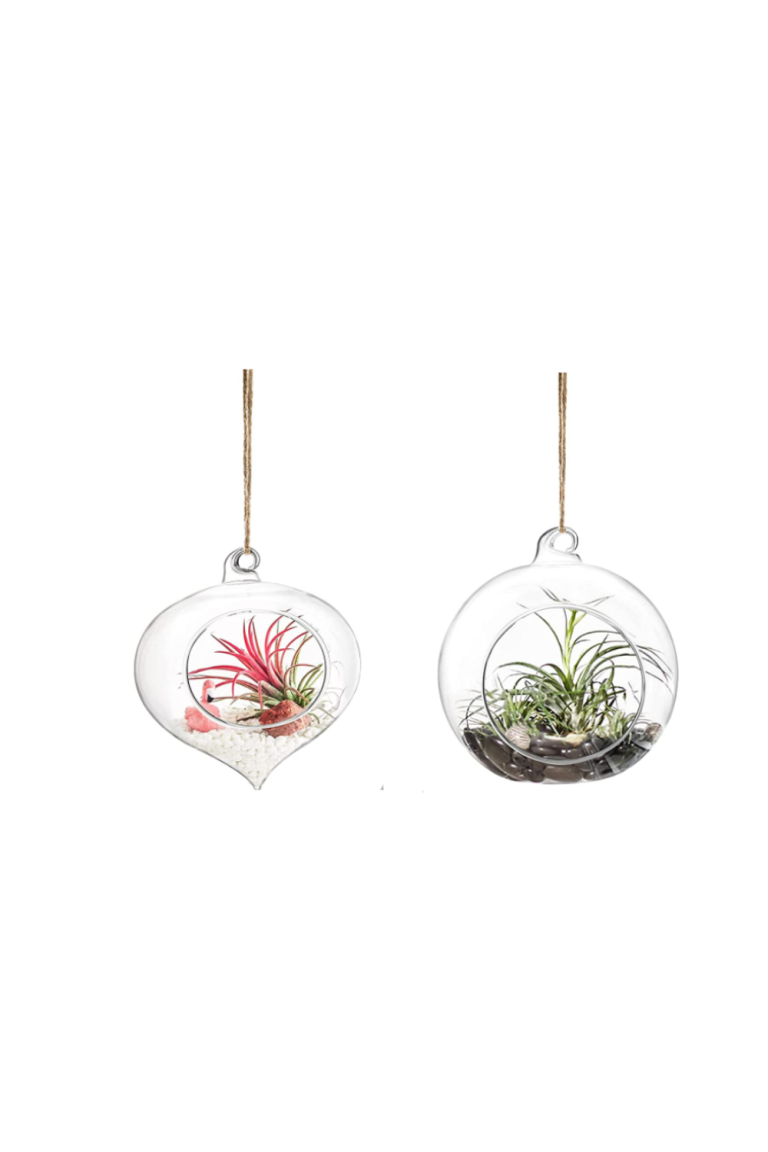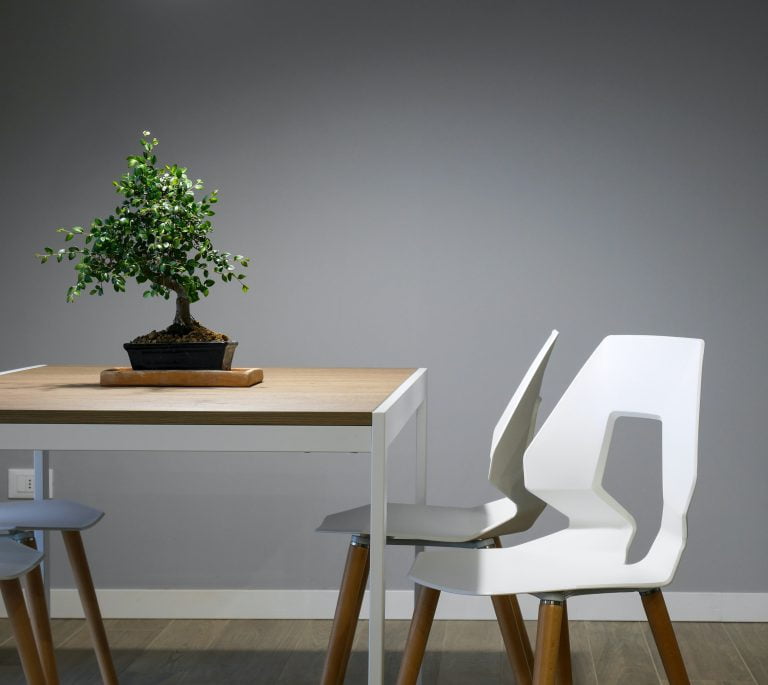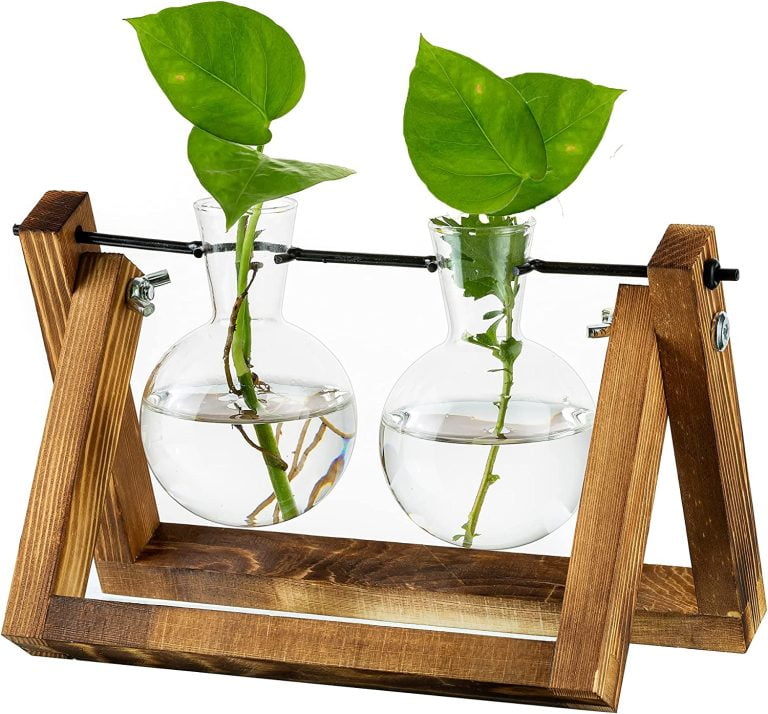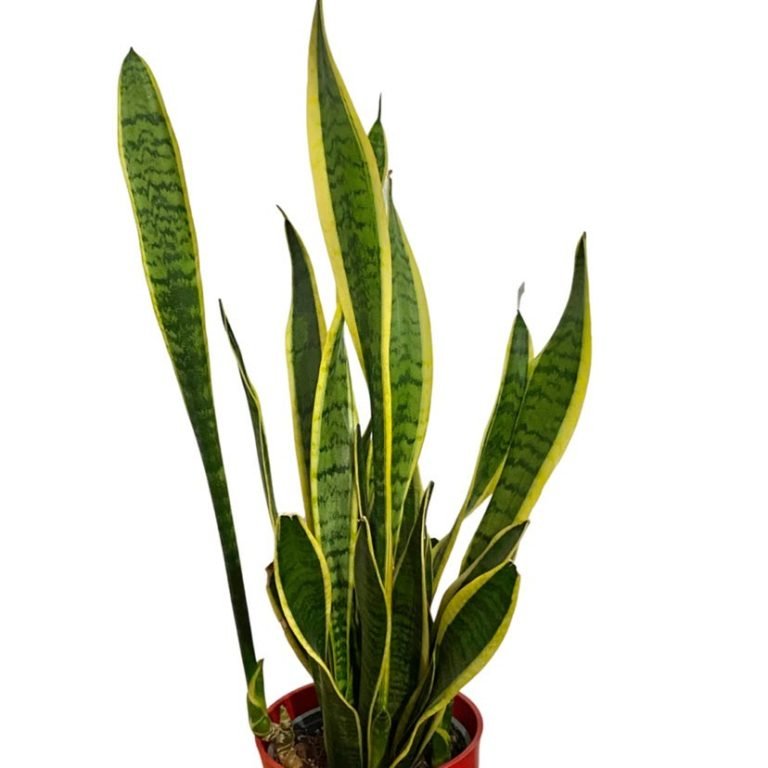Ficus Houseplants
Ficus plants are a popular choice for indoor gardening enthusiasts due to their diverse forms and easy-care requirements. Here’s a look at some of the most beloved types of Ficus houseplants you can grow in your home.
1. Ficus Benjamin (Weeping Fig)
The Weeping Fig is perhaps the most well-known Ficus species. It features slender branches with glossy, pointed leaves that gently droop, giving it a graceful appearance. This plant thrives in bright, indirect light and requires regular watering to keep the soil moist.


Detailed Care Guide
Appearance and Characteristics
Ficus Benjamin, commonly known as the Weeping Fig, is a beloved houseplant known for its elegant and graceful appearance. It features slender, arching branches adorned with glossy, pointed leaves that gently droop. The leaves are typically deep green, but variegated varieties with white or yellow markings are also available. This plant can grow up to 10 feet indoors, given the right conditions, but it can be pruned to maintain a manageable size.
Light Requirements
The Weeping Fig thrives in bright, indirect light. It can tolerate some direct sunlight, especially in the morning or late afternoon, but avoid placing it in harsh midday sun as this can scorch the leaves. If the plant is exposed to insufficient light, it may start shedding leaves. Rotate the plant periodically to ensure even growth and prevent it from leaning towards the light source.
Watering Needs
Regular watering is essential for the Weeping Fig. The soil should be kept consistently moist, but not waterlogged. Allow the top inch of soil to dry out between waterings. Overwatering can lead to root rot, while under watering may cause the leaves to drop. Reduce the frequency of watering during the winter months when the plant’s growth slows down.
Humidity and Temperature
The Weeping Fig prefers a warm and humid environment. Ideal temperatures range between 65°F to 75°F (18°C to 24°C). Avoid placing the plant near drafts, air conditioners, or heating vents, as sudden temperature changes can stress the plant. To increase humidity, mist the leaves regularly or place a humidifier nearby.
Soil and Fertilisation
A well-draining potting mix is crucial for the Weeping Fig. Use a soil blend that retains moisture but also allows excess water to drain away. Fertilise the plant every four weeks during the growing season (spring to early fall) with a balanced liquid fertiliser. Reduce feeding during the winter months.
Pruning and Maintenance
Pruning helps maintain the shape and size of the Weeping Fig. Remove any dead or yellowing leaves and trim back overgrown branches to encourage bushier growth. Pruning is best done in the spring before new growth begins. If the plant becomes too large, it can be repotted into a larger container to accommodate its growing root system.
Common Issues and Troubleshooting
Leaf Drop: The Weeping Fig is sensitive to changes in its environment. Sudden changes in light, temperature, or watering routines can cause the plant to drop its leaves. Gradually acclimate the plant to new conditions to minimise leaf drop.
Pests: Common pests include spider mites, aphids, and scale. Inspect the plant regularly and treat infestations with insecticidal soap or neem oil.
Yellowing Leaves: Yellow leaves can indicate overwatering or nutrient deficiencies. Ensure proper watering practices and consider adjusting fertilisation.
2. Ficus Elastica (Rubber Plant)
The Rubber Plant is admired for its large, glossy leaves that come in a variety of colours, including deep green, burgundy, and variegated forms. It’s a robust plant that can tolerate lower light conditions but prefers bright, indirect light. Water it when the top layer of soil dries out.
Appearance and Characteristics
Ficus Elastica, commonly known as the Rubber Plant, is a striking houseplant known for its large, glossy, leathery leaves. These leaves are typically dark green but can also be found in shades of burgundy and various variegated patterns with creamy white or yellow markings. The plant has a robust, upright growth habit and can grow quite tall indoors, reaching heights of up to 8-10 feet if not pruned. The stems are thick and woody, giving the plant a sturdy appearance.


Light Requirements
Rubber Plants prefer bright, indirect light for optimal growth. While they can tolerate lower light conditions, insufficient light can cause the plant to become leggy and lose its vibrant leaf colour. Avoid placing the plant in direct sunlight, especially during the hottest part of the day, as this can scorch the leaves. If possible, place the plant near an east or north-facing window where it can receive gentle morning light or filtered light throughout the day.
Watering Needs
The Rubber Plant requires consistent watering to thrive. Water the plant thoroughly when the top inch of soil feels dry to the touch. Ensure that the pot has good drainage to prevent water from accumulating at the bottom, which can lead to root rot. During the growing season (spring and summer), you may need to water more frequently, while in the fall and winter, reduce the frequency of watering as the plant’s growth slows down.
Humidity and Temperature
Ficus Elastica thrives in a warm and moderately humid environment. Ideal temperatures range from 60°F to 85°F (16°C to 29°C). While it can tolerate average household humidity, the plant will benefit from higher humidity levels. You can increase humidity by misting the leaves regularly, placing a humidifier nearby, or using a pebble tray with water. Avoid placing the plant near drafts, air conditioners, or heating vents, as sudden temperature changes can stress the plant.
Soil and Fertilisation
Use a well-draining potting mix for the Rubber Plant. A mix designed for houseplants, or a blend of peat, pine bark, and perlite works well. Fertilise the plant every four to six weeks during the growing season with a balanced liquid fertiliser. Reduce feeding in the fall and winter months when the plant’s growth slows. Over-fertilising can cause leaf burn, so follow the recommended dosage on the fertiliser package.
Pruning and Maintenance
Regular pruning helps maintain the Rubber Plant’s size and shape. Trim back any leggy or overgrown stems in the spring to encourage bushier growth. Use clean, sharp scissors or pruning shears to make clean cuts just above a leaf node. Remove any yellowing or damaged leaves to keep the plant looking healthy and attractive. If the plant becomes too tall, you can cut back the main stem, which will encourage branching.
Propagation
Rubber Plants can be easily propagated through stem cuttings. Take a cutting with at least one node and a few leaves. Allow the cut end to dry and callous over for a few hours, then plant it in a pot with moist soil or place it in water to root. Keep the cutting in a warm, humid environment and ensure the soil or water remains consistently moist until roots develop.
Common Issues and how to fix them.
Leaf Drop: Sudden changes in light, temperature, or watering routines can cause the Rubber Plant to drop its leaves. Gradually acclimate the plant to new conditions and maintain a consistent care routine.
Pests: The Rubber Plant can be susceptible to pests such as spider mites, mealybugs, and scale. Regularly inspect the plant and treat infestations with insecticidal soap or neem oil.
Brown Leaves: Brown edges or spots on the leaves can indicate under watering, low humidity, or exposure to direct sunlight. Adjust watering practices and consider increasing humidity to resolve this issue.
3. Ficus lyrata (Fiddle Leaf Fig)
The Fiddle Leaf Fig is famous for its large, violin-shaped leaves. It’s a striking statement plant that needs bright, indirect light to thrive. Be careful with watering; it prefers its soil to dry out slightly between waterings.


Light Requirements
Fiddle Leaf Figs thrive in bright, indirect light. They prefer to be placed near a south or west-facing window where they can receive plenty of bright, filtered light. Avoid exposing the plant to direct sunlight, as it can scorch the leaves, and low light conditions, which can cause leaf drop and stunted growth. Rotate the plant every few weeks to ensure even growth and prevent it from leaning towards the light source.
Watering Needs
Water the Fiddle Leaf Fig when the top inch of soil feels dry. These plants prefer a consistent watering schedule but be cautious not to overwater, as they are prone to root rot. Ensure that the pot has good drainage and empty any excess water from the saucer. During the winter months, reduce the frequency of watering as the plant’s growth slows.
Humidity and Temperature
Fiddle Leaf Figs thrive in warm, humid environments. Ideal temperatures range between 60°F to 75°F (16°C to 24°C). They appreciate higher humidity levels, so consider misting the leaves regularly or placing a humidifier nearby, especially in dry indoor conditions. Avoid placing the plant near drafts, air conditioners, or heating vents, as sudden temperature changes can stress the plant.
Soil and Fertilisation
Use a well-draining potting mix for Fiddle Leaf Figs. A mix designed for houseplants with added perlite or peat moss works well. Fertilise the plant every four to six weeks during the growing season (spring and summer) with a balanced liquid fertiliser. Reduce feeding during the fall and winter months when the plant’s growth slows.
Pruning and Maintenance
Regular pruning helps maintain the size and shape of the Fiddle Leaf Fig. Trim back any leggy or overgrown stems in the spring to encourage bushier growth. Use clean, sharp scissors or pruning shears to make clean cuts just above a leaf node. Remove any yellowing or damaged leaves to keep the plant looking healthy and attractive.
Propagation
Fiddle Leaf Figs can be propagated through stem cuttings. Take a cutting with at least one node and a few leaves. Allow the cut end to dry and callous over for a few hours, then plant it in a pot with moist soil or place it in water to root. Keep the cutting in a warm, humid environment and ensure the soil or water remains consistently moist until roots develop.
Common Issues and how to fix them
Leaf Drop: Sudden changes in light, temperature, or watering routines can cause the Fiddle Leaf Fig to drop its leaves. Gradually acclimate the plant to new conditions and maintain a consistent care routine.
Pests: Common pests include spider mites, mealybugs, and scale. Regularly inspect the plant and treat infestations with insecticidal soap or neem oil.
Brown Spots or Edges: Brown spots or edges on the leaves can indicate under watering, low humidity, or exposure to direct sunlight. Adjust watering practices and consider increasing humidity to resolve this issue.
Yellow Leaves: Yellow leaves can be a sign of overwatering or nutrient deficiencies. Ensure proper watering practices and consider fertilizing if necessary.
4. Ficus microcarpa (Chinese Banyan)
This species is often used in bonsai due to its thick, woody trunk and small, dense foliage. The Chinese Banyan is versatile and can adapt to various light conditions, although it prefers bright, indirect light. Keep the soil consistently moist for optimal growth.


Uses:
Ornamental: Frequently used in urban landscaping and bonsai due to its aesthetic appeal and adaptability to pruning.
Air Purification: Known for its ability to purify indoor air by removing toxins.
Shade: In outdoor, it is a big tree that can reach up to 12 meters high. Provides ample shade due to its dense canopy, making it popular in parks and gardens.
Cultivation:
Light: Thrives in bright, indirect light but can tolerate low light conditions.
Watering: Requires regular watering but should not be waterlogged. Allow the topsoil to dry out between watering.
Soil: Prefers well-draining soil rich in organic matter.
Temperature: Grows best in warm climates and is sensitive to frost.
Care Tips:
Pruning: Regular pruning helps maintain its shape and prevents it from becoming too large for its space.
Pests: Watch for common pests like scale insects and mealybugs. Regular inspection and appropriate treatment can help keep these pests at bay.
Repotting: If grown in a container, it should be repotted every couple of years to refresh the soil and accommodate growth.
Ficus microcarpa is a versatile and hardy plant, making it a popular choice for both indoor and outdoor gardening.
5. Ficus pumila (Creeping Fig)
The Creeping Fig is a climbing or trailing plant with small, heart-shaped leaves. It’s perfect for hanging baskets or as a ground cover in larger pots. This Ficus prefers bright, indirect light and regular watering to keep the soil slightly moist.
Ficus pumila, commonly known as the creeping fig or climbing fig, is a species of flowering plant in the mulberry family, Moraceae. It is native to East Asia and is often used as a decorative vine for covering walls and fences. Here are some key points about Ficus pumila:


Description:
Leaves: Small, heart-shaped, and bright green when young; mature leaves are larger, darker, and thicker.
Stems: Thin and wiry, capable of attaching to surfaces through adhesive roots. Growth Habit: Vigorous climber that can cover large areas if not pruned regularly.
Uses:
Ornamental: Popular for covering walls, fences, and trellises due to its attractive foliage and ability to adhere to surfaces.
Ground Cover: Can also be used as a ground cover in gardens, providing a lush, green carpet.
Indoor Plant: Grown in containers or hanging baskets as a trailing houseplant.
Cultivation:
Light: Prefers bright, indirect light but can tolerate low light conditions.
Watering: Needs regular watering, especially during the growing season. Keep the soil consistently moist but not waterlogged.
Soil: Thrives in well-draining, fertile soil.
Temperature: Prefers warm temperatures and high humidity. It is sensitive to frost and should be protected from cold drafts.
Care Tips:
Pruning: Regular pruning is essential to control its growth and maintain desired shape and size. Trim back any unwanted growth to prevent it from becoming invasive.
Pests: Watch for common pests such as spider mites, scale, and aphids. Regular inspection and appropriate pest control measures can keep these problems in check.
Support: Provide support structures like trellises or allow it to climb on walls and fences. Ensure the surface it climbs on is suitable and can support its weight.
Special Considerations:
Invasiveness: Ficus pumila can become invasive if not managed properly. Regular maintenance and pruning are necessary to prevent it from spreading uncontrollable
Climbing Ability: Its ability to cling to surfaces can sometimes cause damage to structures. Be mindful of where you plant it and monitor its growth.
Ficus pumila is a versatile and attractive plant, ideal for adding greenery to vertical surfaces and as a lush ground cover. With proper care and management, it can be a beautiful addition to both indoor and outdoor spaces.

